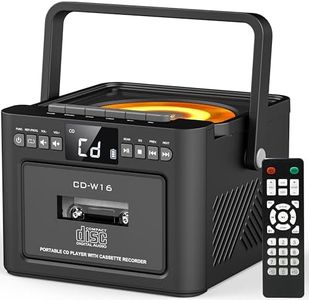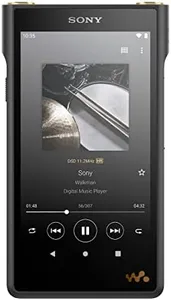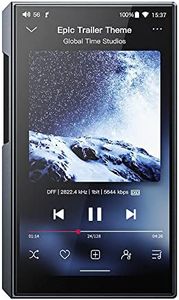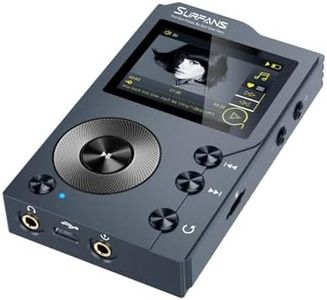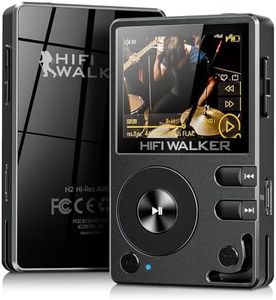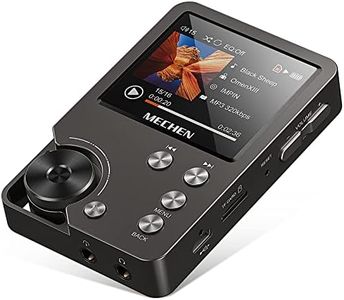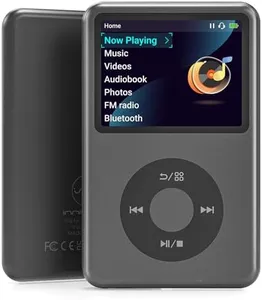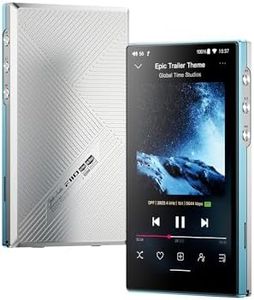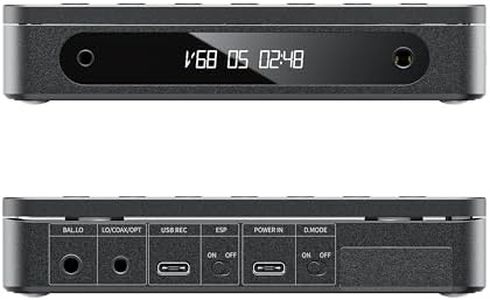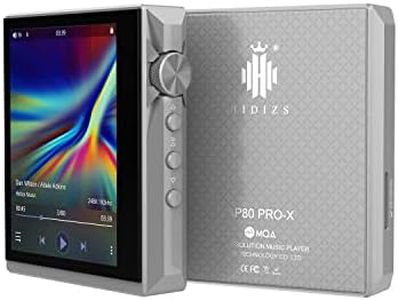We Use CookiesWe use cookies to enhance the security, performance,
functionality and for analytical and promotional activities. By continuing to browse this site you
are agreeing to our privacy policy
10 Best Portable Music Players
From leading brands and best sellers available on the web.Buying Guide for the Best Portable Music Players
When looking for a portable music player, it's important to focus on what you want to get out of your listening experience. Consider how and where you'll be using the player—whether it's for everyday commuting, working out, traveling, or relaxing at home. Think about the types of music files you listen to, how much music you want to carry with you, and what other features are important, like Bluetooth connectivity or battery life. Taking a little time to understand these aspects will help you narrow down your choices to a player that suits your habits and preferences best.Storage CapacityStorage capacity tells you how much music and other data you can keep on your device. This is usually measured in gigabytes (GB). Smaller capacities, like 4GB or 8GB, fit a few hundred songs—fine for casual listeners or those who rotate music often. Medium ranges, around 16GB to 32GB, can hold thousands of songs, suiting people with larger libraries or who listen to high-quality formats. Higher capacities, from 64GB and up, are for music lovers who want their entire collection, including high-resolution audio, at hand. Choose your storage by considering the size of your library and whether you mind swapping music in and out.
Supported Audio FormatsSupported audio formats refer to the different file types your player can handle, such as MP3, AAC, WAV, FLAC, and more. Basic players often cover MP3 and AAC, which are standard for most listeners. More advanced ones add WAV, FLAC, or ALAC for higher quality sound, appreciated by audiophiles. If you care most about convenience and aren't too concerned with ultra-high audio quality, a player with MP3 and AAC support may be enough. If you want to hear every detail in your music and have a collection in lossless or high-res files, look for players supporting those formats.
Battery LifeBattery life means how long the player can run on a single charge. Some last only a few hours, while others might offer 24 hours or more of playback. Shorter battery life is fine if you listen in short bursts or can charge often, like at home or at work. For travel, commuting, or long exercise sessions, a player with longer battery life is convenient, so you don’t have to worry about the device dying mid-use. Think about your daily routine and how often you’ll be able to charge your player to decide how much battery life makes sense for you.
Size and PortabilityThe size and weight of the player affects how easy it is to carry around. Compact players fit easily in pockets and are ideal for running or gym use, while larger ones, which may have more features or bigger screens, are bulkier but offer more functionality, like video playback or large touchscreens. If you want something to use during workouts or commuting, a slim and lightweight option is best. If you want a bigger screen for browsing your library or watching videos, you might go for a larger device.
User Interface and ControlsThis refers to how you navigate through your music—whether with buttons, touchscreens, or wheels. Simple interface with physical buttons is great if you use the player during activities or want a distraction-free experience. Touchscreens provide more interactive experiences and are easier for browsing large libraries, though they might not be as reliable in wet or sweaty conditions. Consider your typical using situations to pick a control style that feels intuitive and practical to you.
ConnectivityConnectivity options include features like Bluetooth, Wi-Fi, and headphone jacks. Bluetooth lets you pair wireless headphones or speakers, which is handy if you dislike cords or want freedom to move. Wi-Fi allows for downloading or streaming music directly, but this adds complexity and uses more battery. Traditional headphone jacks are still essential for many who use wired headphones. Decide which connections matter based on how you listen—wireless for flexibility, or wired for maximum sound quality and simplicity.
Durability and Build QualityHow sturdy and well-built a device is can matter a lot, especially if you plan to use it outdoors or during exercise. Some players have waterproof or sweat-resistant designs, making them fit for active lifestyles. More delicate, stylish models may suit those who use their player mainly indoors or handle their devices carefully. Think about the environments where the player will see the most use and choose a build that matches your lifestyle.
